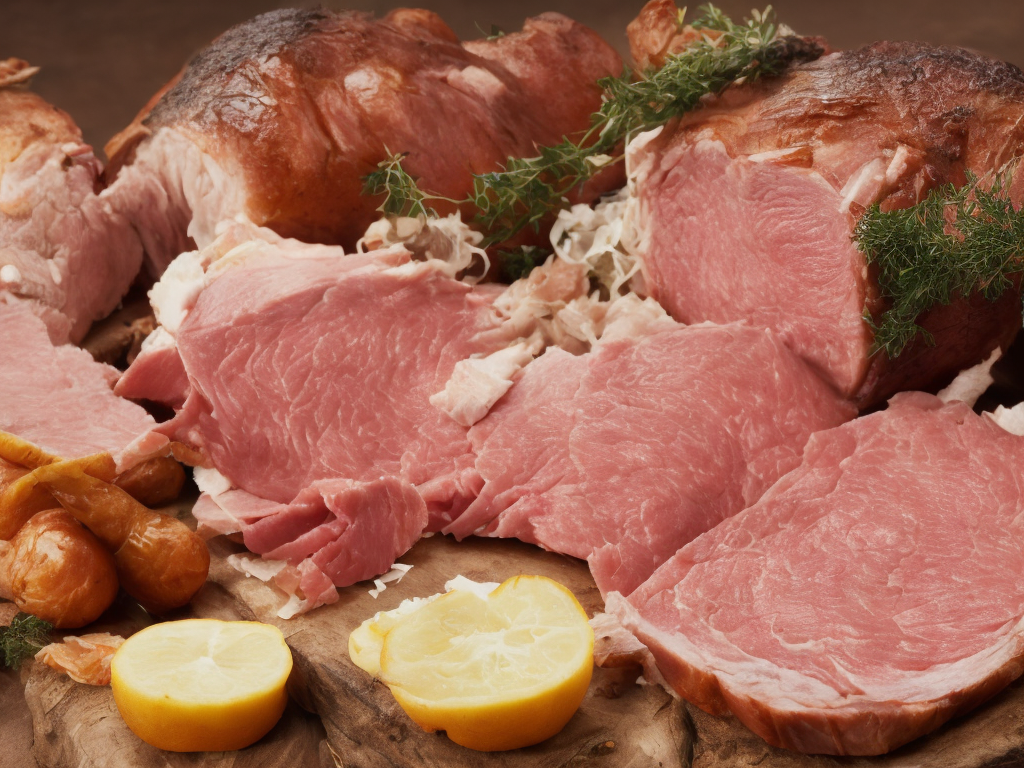
Gammon and ham are two terms often used interchangeably to refer to a type of meat derived from pork. However, while both gammon and ham are derived from the same animal, there are significant differences between the two in terms of their preparation, flavor, and usage. In this article, we will explore the differences between gammon and ham to shed light on the distinctions and to help you make more informed choices when it comes to buying or cooking these meats.
First and foremost, let's understand the origins of both gammon and ham. Gammon is a term primarily used in British English to refer to the hind leg of a pig that has been cured and smoked. It is usually sold whole and can be cooked either boiled or roasted. On the other hand, ham is a more general term used to describe the meat from the hind leg or shoulder of a pig, which can be cured in various ways. While both gammon and ham come from the pig's leg, the curing process and additional steps for gammon make it distinct from ham.
The curing process itself is one of the key differences between gammon and ham. Both require the meat to be preserved with salt, but gammon often undergoes additional curing steps. After being treated with a dry cure of salt and various spices, gammon is then boiled or steamed. On the other hand, ham can be preserved with a dry cure as well, but it can also be salted or soaked in a brine solution. This difference in curing methods gives gammon a more intensely salty flavor compared to ham, which tends to have a milder taste.
Another noticeable difference between gammon and ham lies in their appearance and texture. Gammon usually has a deep pink color, while ham can vary in color depending on how it is cured. The texture of gammon is usually firm and less moist compared to ham. Due to the boiling or steaming process, gammon retains its shape and is easier to slice, making it a popular choice for roasts and ham slices. Ham, on the other hand, can have a more tender and juicier texture, especially if it has been cooked slowly and for a longer period.
When it comes to cooking methods, gammon and ham can be prepared in various ways. Gammon is often boiled or roasted, while ham can be cooked by boiling, roasting, baking, grilling, or even smoking. Due to its more intense flavor, gammon is usually served with accompanying sauces, such as honey or mustard glaze, to balance out the saltiness. On the other hand, ham can be enjoyed both as a centerpiece in a meal or used as an ingredient in various dishes. It is commonly found in sandwiches, salads, soups, and even pasta dishes.
In terms of nutritional composition, gammon and ham are both good sources of protein. However, due to the curing process, they can be quite high in sodium. Therefore, it is important to consume them in moderation, especially for individuals with high blood pressure or dietary restrictions on sodium intake. Additionally, both gammon and ham contain other essential nutrients such as vitamins B6 and B12, zinc, and phosphorus, making them a valuable addition to a well-balanced diet when consumed in moderation.
To summarize, gammon and ham are distinct in their preparation, flavor, and usage. Gammon is specifically derived from the hind leg of a pig that has been cured and smoked, with a more intense flavor and firm texture compared to ham. It is often served as a centerpiece for roasted meals or sliced for sandwiches. On the other hand, ham refers to the meat from the hind leg or shoulder of a pig, which can be cured in different ways. It has a milder taste, more tender texture, and is versatile in its usage, making it a popular ingredient in a variety of dishes. Regardless of their differences, both gammon and ham are delicious options to add to your culinary repertoire, offering unique flavors and textures that can elevate any meal.
 Self-Instruct
Self-Instruct